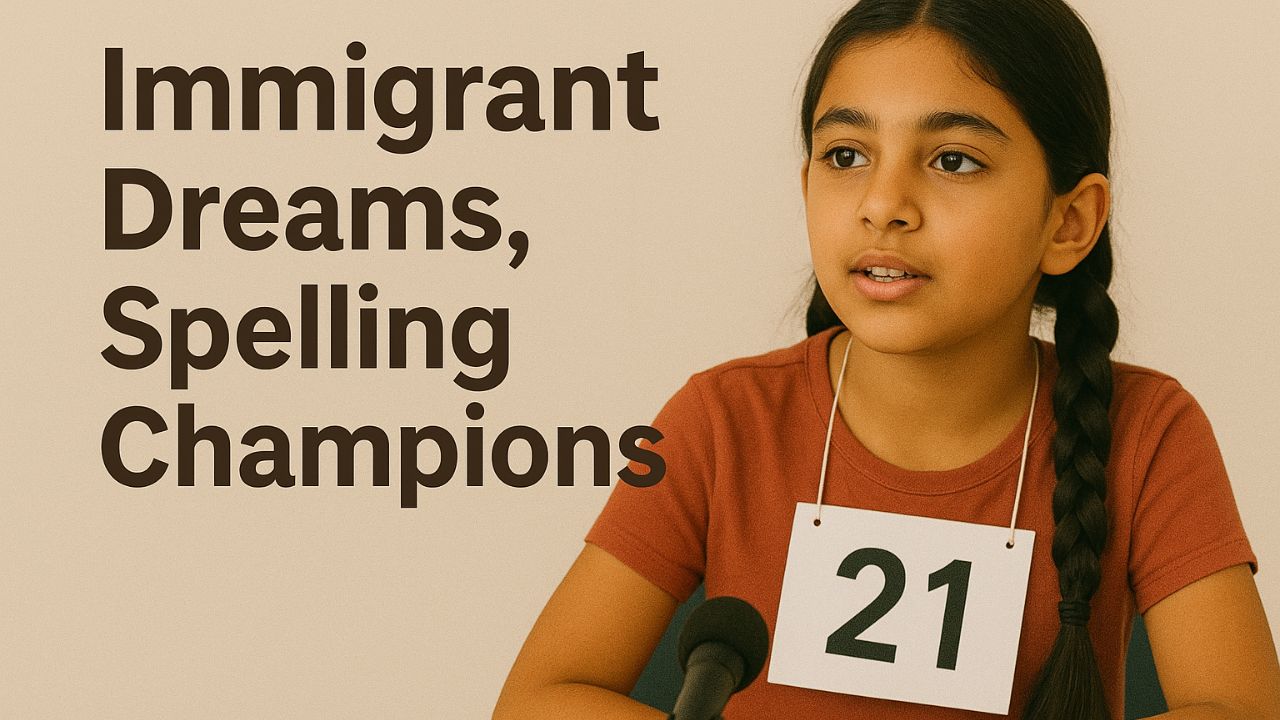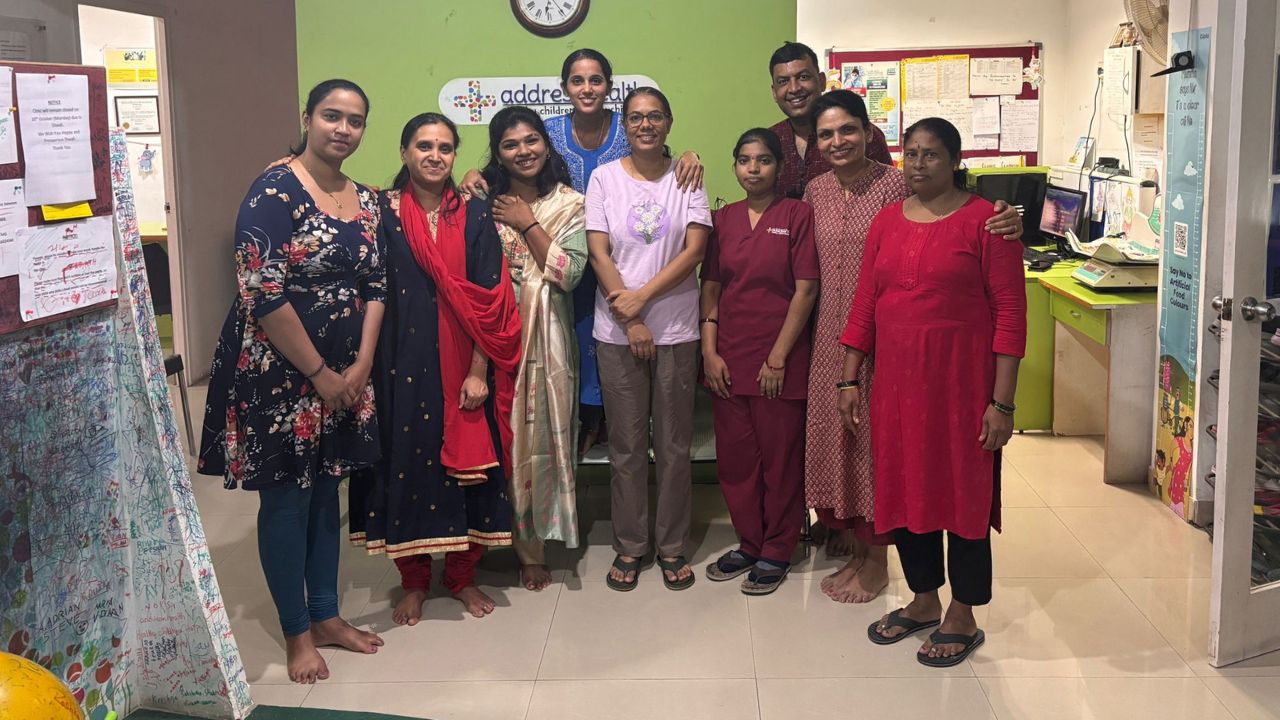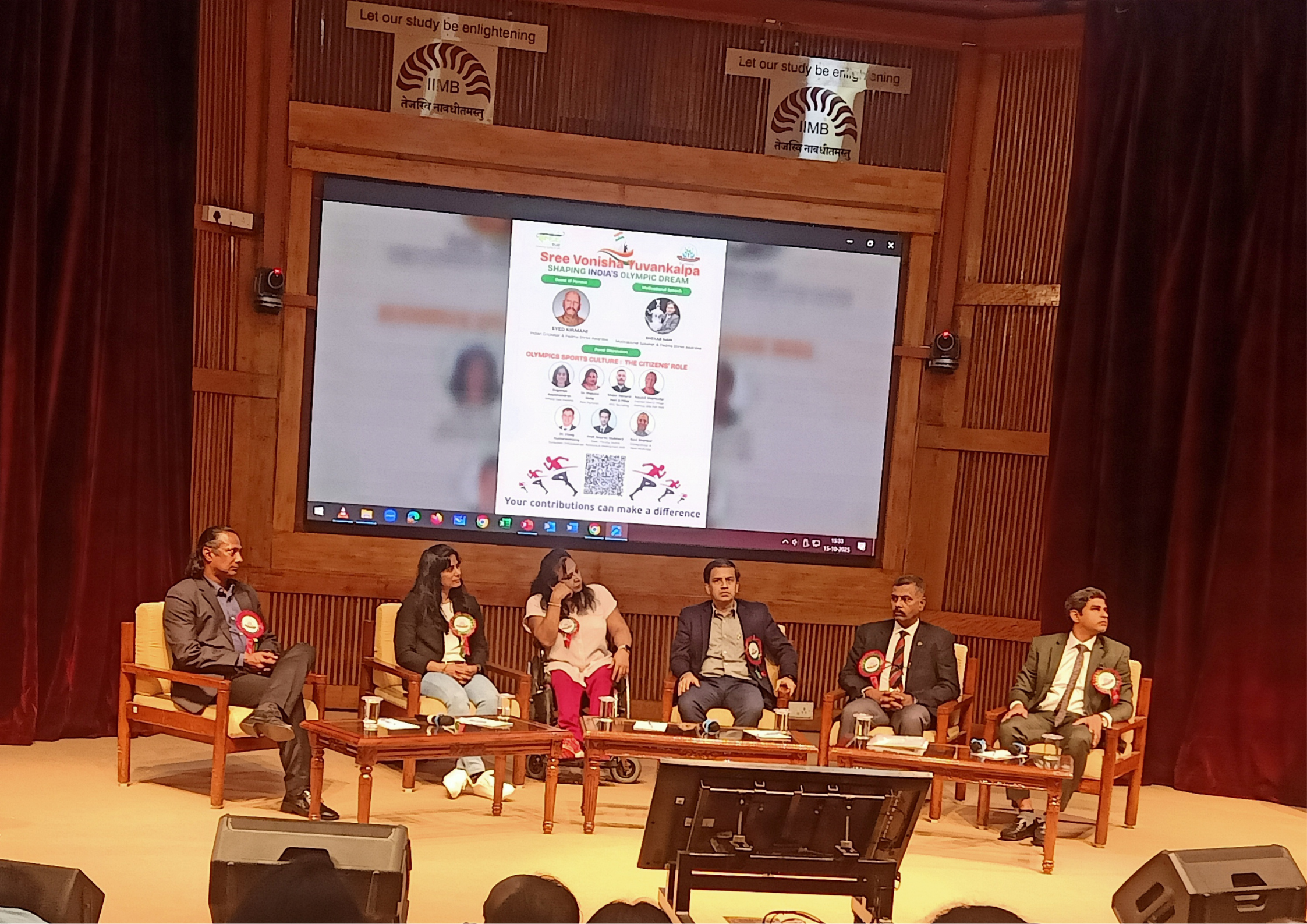Immigrant Dreams, Spelling Champions

How Indian Immigrant Families Built a Spelling Empire
Audience: NRI parents in the USA, Europe, and elsewhere who want to understand how a community turned aspiration into repeated success—and what lessons (and cautions) parents can take away.
Introduction — a surprising American story
If you’ve watched recent clips from the Scripps National Spelling Bee, you’ve probably noticed the same thing many commentators have: the stage is full of children from Indian-American backgrounds, and year after year, the trophy frequently goes to someone whose household speaks about education the way others speak about family dinners. This is no single-season trend; between 1999 and 2024 Indian-American contestants claimed roughly three out of every four national championships. For parents who moved across oceans hoping their children would thrive, that kind of sustained achievement raises questions: how did this happen? Is it luck, pressure, or strategy? And what does it mean for parents who want their child to do well—without losing childhood in the process?
This article traces the practical, cultural, and structural forces that combined to create what can fairly be called a “spelling-bee engine.” It’s not a story of innate advantage; it’s a story of migration policy, parental expectation, community organization, savvy strategy, and a love for focused practice. For global Indian families—many of whom arrived chasing careers in medicine, engineering, and academia—this story holds both inspiration and important lessons about balance.
A quick historical arc: small towns, a first win, and a catalyst
Spelling bees began as a local American pastime and for decades were dominated by small-town children. The first visibly pivotal moment for Indian-American contestants came in 1985, when Balu Natarajan became the first Indian-American national champion. That victory was meaningful but isolated. The real shift arrived later: the 1999 documentary Spellbound followed a young Indian-American champion and gifted a generation of parents an image they could recognize—someone “like us” winning on a national stage. From the early 2000s the numbers climbed, and by the late 2000s and 2010s Indian-American spellers were winning consistently, often occupying the final rounds in disproportionate numbers.
That timeline matters because it points away from anything biological and toward something social and strategic: the community learned, organized, and scaled what worked.
Pillar One — immigration policy and a culture of high expectations
A key, often-understated piece of this puzzle is the post-1965 immigration landscape. Changes to U.S. immigration law prioritized skilled professionals. The result—many Indian families who settled abroad included doctors, engineers, professors, and others already steeped in English-medium education and academic ambition. These families valued education not just as enrichment but as the primary engine of social mobility and stability in a new country.
What this produced was a family culture where time, attention, and resources were routinely invested in children’s academic development. When educational achievement is the primary language of a household—conversations about study, practice, results, and incremental improvement—children internalize a serious approach to skill-building early on. That doesn’t automatically create champions, but it creates the conditions where sustained, rigorous preparation becomes possible.
Pillar Two — community infrastructure and the “feeder” ecosystem
Perhaps the most practical reason for prolonged success is that Indian-American families didn’t leave spelling preparation to chance. They built systems: local spelling clubs, community-run qualifiers, coaching networks, and national events that function like youth sports leagues but for words. These organizations scaffold practice (phonetics, root words, etymology), create opportunities to perform under pressure, and produce a steady pipeline of experienced contestants who can coach the next generation.
This community-built model does several things simultaneously: it normalizes the activity as an ordinary childhood pursuit, provides low-cost access to training and mentors, and creates social proof (children see peers doing it; parents see neighbors investing in it). That social proof is powerful: once winning becomes visible and repeated, participation grows, and the talent pool deepens.
Pillar Three — representation: the Spellbound effect
Never underestimate representation. The 1999 documentary Spellbound showed a young Indian-American on an American stage, succeeding on merit. For immigrant families, seeing is believing: representation made top-tier success feel attainable and legitimate. That new belief translated into more families investing time and energy into spelling as a worthwhile pursuit for their children. Over time, that ripple effect magnified—one win inspires many more hopefuls, and the infrastructure to support them follows.
How the competition rewards the community’s strengths
Spelling bees are uniquely meritocratic. Unlike some activities that require expensive equipment, elite travel, or a closed network, bees reward careful, repeatable preparation: knowledge of roots, exposure to language, and the ability to perform calmly under pressure. These are skills that can be taught and practiced. The competition’s clarity (rules, word lists, public scoring) makes it an ideal arena for families that emphasize disciplined preparation and process-driven improvement.
The successful contestants don’t just memorize lists. They analyze words—learning Greek and Latin roots, patterns, affixes, and language families—and develop strategies to deduce unfamiliar words. This analytical approach mirrors habits cultivated in many immigrant households: methodical study, respect for drilling and repetition, and an emphasis on mastering fundamentals.
Beyond the trophy: social and emotional dynamics
It’s important to recognize spelling bees are social experiences, not solitary sprints. The circuit creates peer groups that elevate children’s interest and stamina. Practice rooms become social hubs. Coaches are often former contestants who want to give back. Parents trade tips and resources. That social ecosystem helps make months of preparation feel meaningful and even joyful, rather than isolating.
But there’s another side: intense focus can create high-pressure environments. For parents watching from outside the community, it’s vital to separate encouragement from coercion. Long-term wellbeing means children keep balance—time for play, friendships, and creative exploration—alongside academic goals.
Lessons for NRI parents who want their children to thrive
If you’re an NRI parent reading this and wondering whether your child should enter this world of spelling bees—or how to support them—here are practical, balanced takeaways:
- Value process over trophies. Teach curiosity about words, languages, and stories. Celebrate consistent practice and improvement more than single wins.
- Build—don’t force—a routine. Short, steady practice beats last-minute cramming. Fifteen to thirty minutes a day of playful, structured wordwork can be transformative.
- Use community resources. Find local spelling clubs, community organizers, or online groups. These provide coaching, mock bees, and a peer network.
- Teach strategies, not just lists. Emphasize root words, language families, and logic for deducing spellings—skills that transfer to reading and vocabulary in general.
- Keep childhood whole. Ensure your child has time for unstructured play, hobbies, and friendships. Pressure erodes love for learning; balance sustains it.
- Model a growth mindset. Use language that praises effort and tactics—“You improved in breaking down roots!”—rather than labels like “genius” or “natural.”
- Be mindful of mental health. If preparation becomes anxiety-inducing, pause, reassess goals, and consider shorter commitments or different activities.
What parents overseas can realistically do
For families outside the U.S. who admire the model and want to replicate its benefits, start locally. Form study groups with other interested parents, invite a past contestant or coach to run a workshop, and create friendly mini-competitions to normalize performing. Invest in resources that teach etymology and phonetics. If your child is very young, make the work game-like—word puzzles, family spelling nights, and storytelling. Over time, small, consistent investments compound into real skill.
A broader view: what this phenomenon tells us about immigrant success
The spelling-bee story is a microcosm of a wider pattern of achievement: immigrant communities often succeed where the environment rewards skill, practice, and clarity of rules. Where opportunity is transparent and training is possible at low cost, concentrated cultural investment can produce outsized results. That’s not cheating; it’s strategy—organized, communal, and sustained.
At the same time, this story is also a reminder that opportunity must be matched with ethics and balance. Success that costs childhood or health is a poor bargain. The healthiest models combine high expectations with compassion.
Conclusion: practical pride, thoughtful aspiration
From a handful of early wins to a generation of champions, the rise of Indian-American spelling-bee success is a study in how immigrant ambition, community organization, and strategic practice combine to produce remarkable results. For NRI parents, the lesson is empowering: you can create environments where children learn to solve hard problems, perform under pressure, and build confidence—without assuming genetics or luck.
If you’re inspired, start small: encourage curiosity about language, connect with local groups, and focus on steady practice. If you’re cautious, remember that balance matters most. And if you’re simply proud—allow yourself that pleasure. The story of spelling bees is, at heart, the story of families who moved oceans for better lives and quietly taught a generation to master something as human and hopeful as words.
Practical next step: consider attending a local spelling club or community bee to see whether your child enjoys the process. Consult local centers or community groups to evaluate whether their approach matches your family values and your child’s temperament.




